Fuhu Che
Novel Fine-Tuned Attribute Weighted Naïve Bayes NLoS Classifier for UWB Positioning
Apr 14, 2023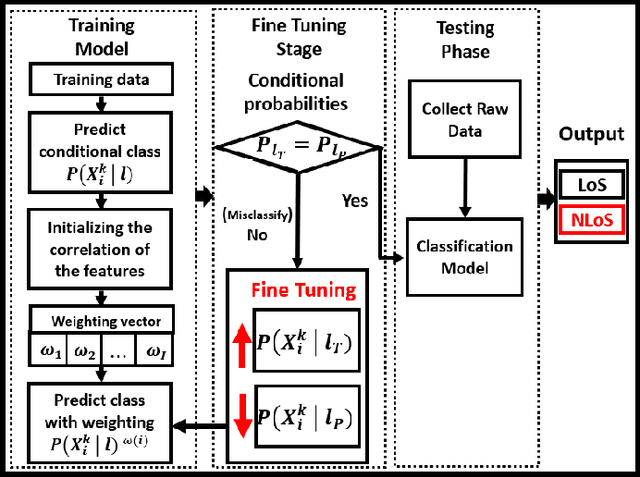
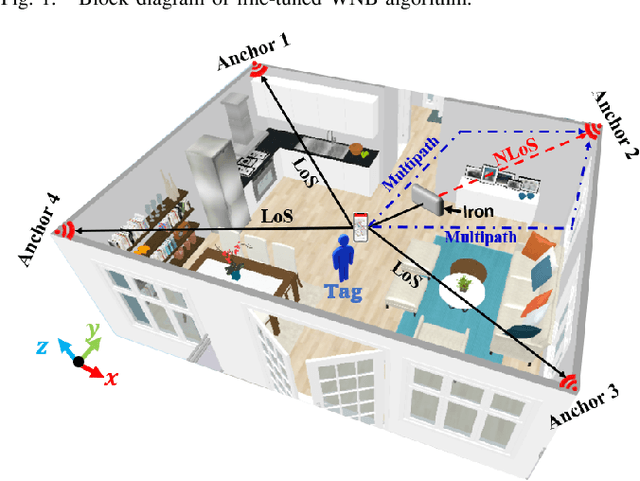
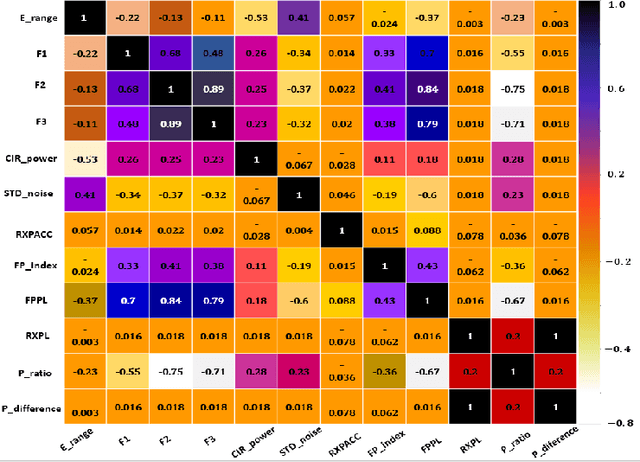
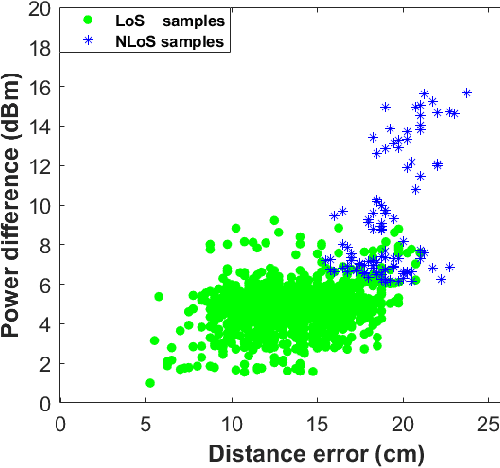
Abstract:In this paper, we propose a novel Fine-Tuned attribute Weighted Na\"ive Bayes (FT-WNB) classifier to identify the Line-of-Sight (LoS) and Non-Line-of-Sight (NLoS) for UltraWide Bandwidth (UWB) signals in an Indoor Positioning System (IPS). The FT-WNB classifier assigns each signal feature a specific weight and fine-tunes its probabilities to address the mismatch between the predicted and actual class. The performance of the FT-WNB classifier is compared with the state-of-the-art Machine Learning (ML) classifiers such as minimum Redundancy Maximum Relevance (mRMR)- $k$-Nearest Neighbour (KNN), Support Vector Machine (SVM), Decision Tree (DT), Na\"ive Bayes (NB), and Neural Network (NN). It is demonstrated that the proposed classifier outperforms other algorithms by achieving a high NLoS classification accuracy of $99.7\%$ with imbalanced data and $99.8\%$ with balanced data. The experimental results indicate that our proposed FT-WNB classifier significantly outperforms the existing state-of-the-art ML methods for LoS and NLoS signals in IPS in the considered scenario.
Feature-Based Generalized Gaussian Distribution Method for NLoS Detection in Ultra-Wideband (UWB) Indoor Positioning System
Apr 14, 2023Abstract:Non-Line-of-Sight (NLoS) propagation condition is a crucial factor affecting the precision of the localization in the Ultra-Wideband (UWB) Indoor Positioning System (IPS). Numerous supervised Machine Learning (ML) approaches have been applied for NLoS identification to improve the accuracy of the IPS. However, it is difficult for existing ML approaches to maintain a high classification accuracy when the database contains a small number of NLoS signals and a large number of Line-of-Sight (LoS) signals. The inaccurate localization of the target node caused by this small number of NLoS signals can still be problematic. To solve this issue, we propose feature-based Gaussian Distribution (GD) and Generalized Gaussian Distribution (GGD) NLoS detection algorithms. By employing our detection algorithm for the imbalanced dataset, a classification accuracy of $96.7\%$ and $98.0\%$ can be achieved. We also compared the proposed algorithm with the existing cutting-edge such as Support-Vector-Machine (SVM), Decision Tree (DT), Naive Bayes (NB), and Neural Network (NN), which can achieve an accuracy of $92.6\%$, $92.8\%$, $93.2\%$, and $95.5\%$, respectively. The results demonstrate that the GGD algorithm can achieve high classification accuracy with the imbalanced dataset. Finally, the proposed algorithm can also achieve a higher classification accuracy for different ratios of LoS and NLoS signals which proves the robustness and effectiveness of the proposed method.
Anomaly Detection Based on Generalized Gaussian Distribution approach for Ultra-Wideband (UWB) Indoor Positioning System
Aug 09, 2021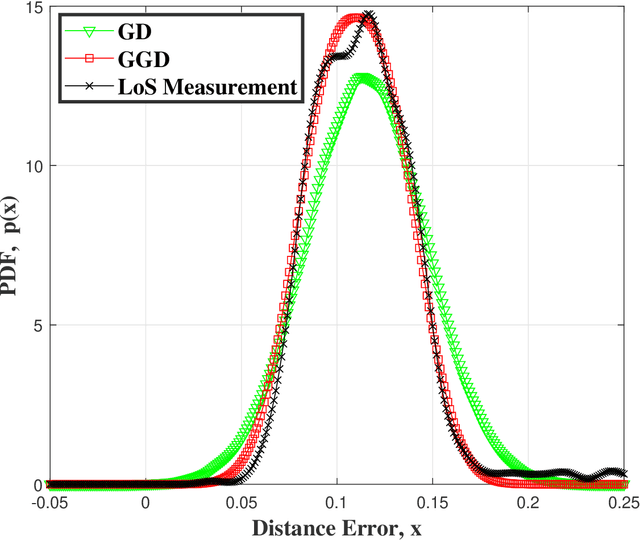
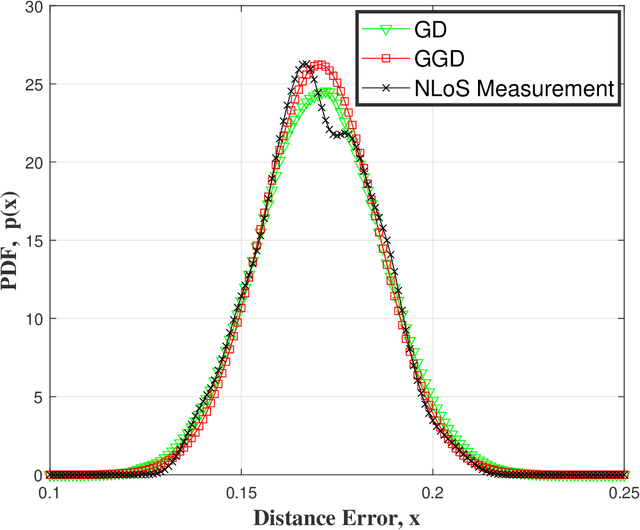
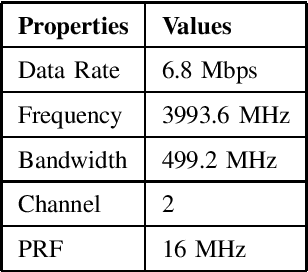
Abstract:With the rapid development of the Internet of Things (IoT), Indoor Positioning System (IPS) has attracted significant interest in academic research. Ultra-Wideband (UWB) is an emerging technology that can be employed for IPS as it offers centimetre-level accuracy. However, the UWB system still faces several technical challenges in practice, one of which is Non-Line-of-Sight (NLoS) signal propagation. Several machine learning approaches have been applied for the NLoS component identification. However, when the data contains a very small amount of NLoS components it becomes very difficult for existing algorithms to classify them. This paper focuses on employing an anomaly detection approach based on Gaussian Distribution (GD) and Generalized Gaussian Distribution (GGD) algorithms to detect and identify the NLoS components. The simulation results indicate that the proposed approach can provide a robust NLoS component identification which improves the NLoS signal classification accuracy which results in significant improvement in the UWB positioning system.
 Add to Chrome
Add to Chrome Add to Firefox
Add to Firefox Add to Edge
Add to Edge